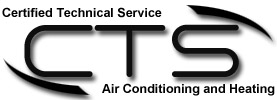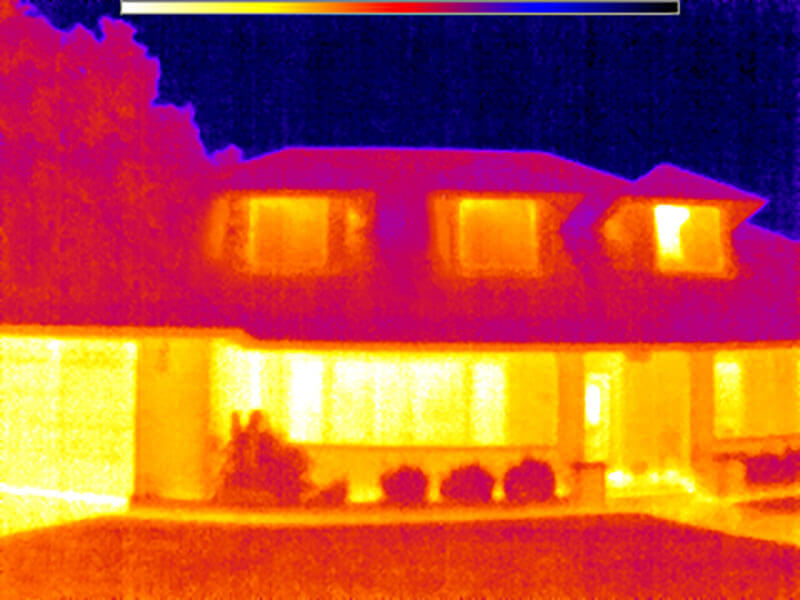
FLIR Thermal Imaging
FLIR Thermal imaging cameras are a great tool for HVAC inspections. CTS Air Conditioning uses FLIR to quickly diagnose issues with your home and HVAC system. Thermal imaging reveals bad door seals, poor insulation, inefficient windows, and a variety of other things that can make your air conditioner work harder to maintain your home’s temperature.
HVAC equipment problems can easily be seen with thermal imaging. As the components inside an air conditioner start to wear out, they typically run hotter than normal. This increase in temperature is able to be detected with our FLIR Thermal imaging camera. We can identify components that are at risk of failing and leaving you without heating or cooling power. The problem with your HVAC system can be fixed before you experience any downtime.
Thermal Imaging for HVAC Inspections
Your HVAC system needs to be well maintain to provide long term comfort and air quality to your home. Like any mechanical component, eventually your air conditioner will breakdown. HVAC equipment that has to run longer and harder due to air leaks in ducting, poor insulation and bad installation breaks down more often. Large electricity bills are likely, as your AC equipment has a greater workload. Thermal imaging done during a HVAC inspection is a great way to catch these problems and address them before they cost you more money.
Thermal imaging can give you a thorough understanding of your home’s insulation as well as identify any damaged weather seals. Missing insulation, air leaks around windows and doors, and leaking air ducts are easily spotted with a FLIR camera.
Some of the thermal inspection services CTS Air Conditioning provides
- Interior walls and ceilings
- Exterior walls
- Attic
- Air ducts
- Registers
- Windows and doors
- HVAC equipment
HVAC Thermal Imaging
A thermal image of your heating and air conditioning system allows you to see areas that are hotter or colder than surrounding areas. The health of the electrical and mechanical components of your HVAC system is related to the temperature of it’s components.
Electrical Thermal Imaging On Air Conditioning Systems
Components such as motors, circuit boards, and other electrical components will heat up as they begin to fail. Hot circuits and motors could be signs of electrical shorting. Capacitors are sensitive to overheating and running your HVAC system too long can cause them to electrically overheat. Contactors that have dirty or pitted contacts will chatter and heat up. Eventually they can fry wires and burn up if they are not replaced in time.
Mechanical Thermal Imaging On Air Conditioning Systems
Bearings and compressors will heat up as they fail. A failing bearing will have more friction than a good one and there will be a buildup of heat in the bearing as it turns. When failing bearings are inspected with FLIR they will glow bright white showing a problem with overheating. Compressors that are failing or low on refrigerant will also get hot. When an HVAC system is undercharged with refrigerant, The thermostatic expansion valve cannot regulate superheat. This will starve the evaporator of refrigerant and put refrigerant back into the compressor that is too hot. The cycle repeats and the heat of compression raises the compressors temperature. The compressor will draw lower than normal amperage but will get very hot. The compressor can burn up and fail if the proper amount of refrigerant isn’t added back into the system.

Air Duct Thermal Imaging
Problems with your HVAC system’s air ducts will show immediately in a thermal image. Issues such as poor insulation, air leaks in ducting, and blockages inside air ducts are much easier to identify and repair. Many homes loose huge amounts of energy and have high power bills due to issues with air ducts.
Thermal Imaging To Find Poor Insulation On Air Ducts
Our thermal imaging camera can find the infrared radiation signature from a poorly insulated air duct. Air ducts have a large amount of surface area and insufficient insulation can allow a large amount of heating or cooling to be wasted. It’s very important that all air ducts be properly insulated.
Thermal Imaging To Find Air Leaks In Ducting
Air ducts that have holes, or are improperly connected can cause air to leak out before it reaches the registers in your home. Air leaks in ducting creates a huge inefficiency with your HVAC system. Poorly sealed registers and ducts are another common point for air leaks. Getting a thermal scan of your homes air ducts is a great way to check for these problems.
Thermal Imaging To Locate Blockages In Air Ducts
Inadequate air flow from your HVAC systems air ducts are signs of a poorly designed ventilation system or a blockage. Locating blockages in air ducts with thermal imaging is one of the best ways to find the obstruction. Ducting can also be crushed, or have dampers installed that restrict air flow too much.
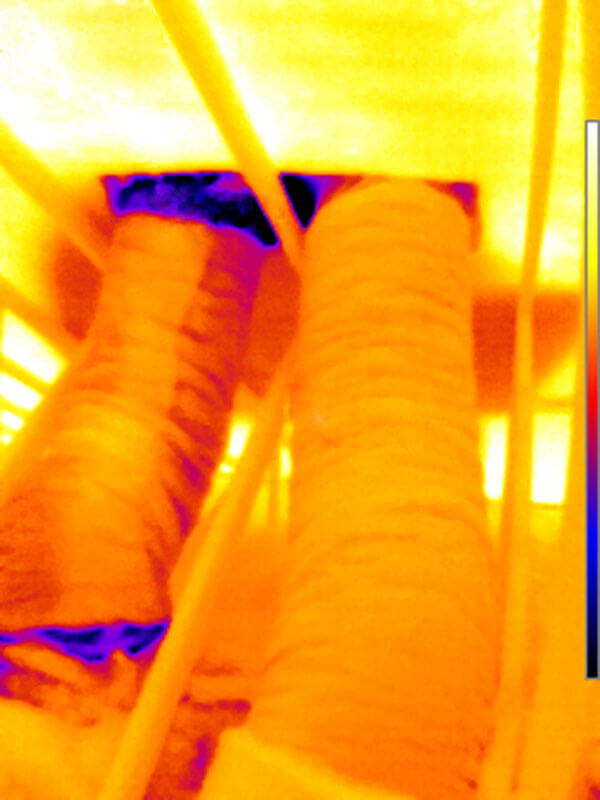
Thermal Imaging Of Doors And Windows
A common place to find heating and cooling losses in your home is the windows and doors. Bad weatherstripping, seals and thresholds allow large amounts air to get inside and move the temperature away from comfortable levels. Single pane windows may also allow heating or cooling to escape.
Thermal Imaging To Find Bad Weatherstripping
When weatherstripping ages it may become compressed and no longer able to seal your home. Tears and other damage can occur that leave gaps in the seal between the inside and outside air. Our FLIR thermal camera can spot this and if there is a problem we can replace the weatherstrip around your door jamb and header so you will have a good seal again.
Thermal Imaging To Find Inefficient Windows
If you live in an older home, you may have single pane glass windows. You might wonder if these windows are a huge impact on your power bill. A thermal scan to help determine whether replacing your single pane windows with double pane windows might be worthwhile for you. Double pane windows are much better at reducing thermal transfer between with interior and exterior of your home. It also costs a lot of money to upgrade your windows from single pane to double pane. A quality thermal image can show you how significant thermal losses through your windows are and allow you to make an informed decision.
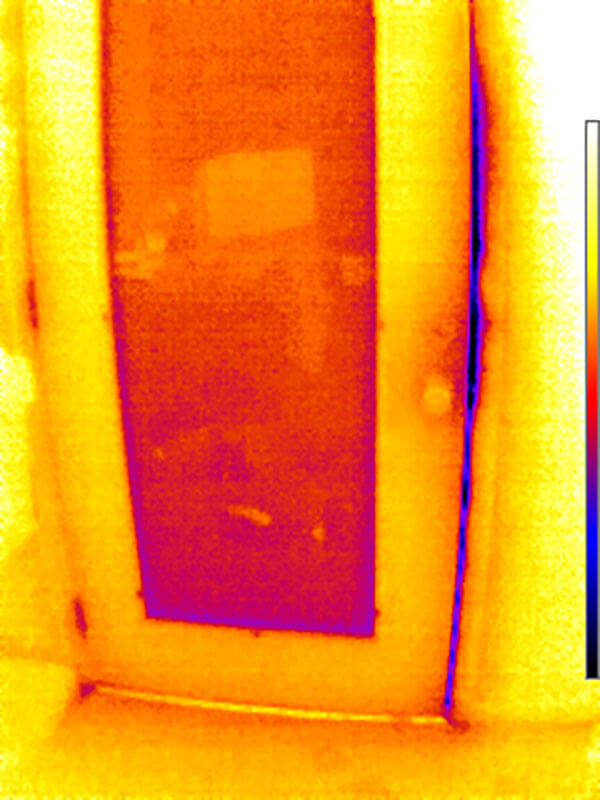
Thermal Imaging Walls And Ceilings
Insulation in your attic and walls make a thermal barrier to help keep your home at the desired temperature. Thermal inspection can reveal areas where insulation is too thin or completely missing. This can lead to expensive energy bills because your air conditioner or heater has to work harder. You can experience uneven heating and cooling throughout your house. Some rooms may be at the desirable temperature while others are too hot or cold. To fix these problems the thermal barrier in your attic or wall must be repaired. CTS air conditioning can add insulation in your attic if it’s necessary.
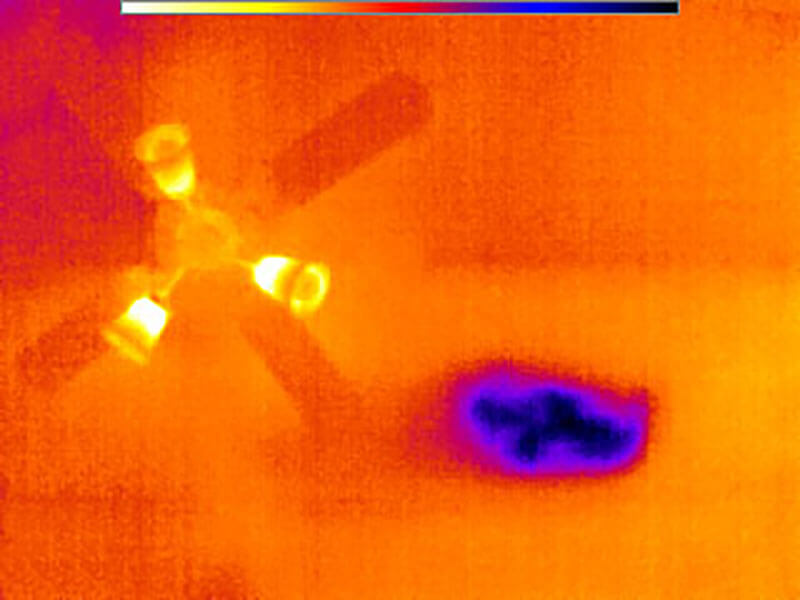
Great Explainations And Tips On Thermal Imaging
CTS Air Conditioning’s Thermal Imaging Service
CTS Air Conditioning serves the residential and commercial HVAC needs of Phoenix Arizona and Maricopa County AZ. The CTS team uses the latest technology to better serve our clients. With FLIR thermal imaging camera technology we can diagnose HVAC issues quicker and more reliably than competitors. A leaky duct could be costing you up to 30 or 40% more in energy costs. Understand your homes thermal signature, identify and repair heating and cooling inefficiency.
Call us today for a thermal scan of your home. 480-696-5033
